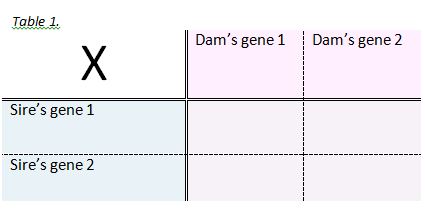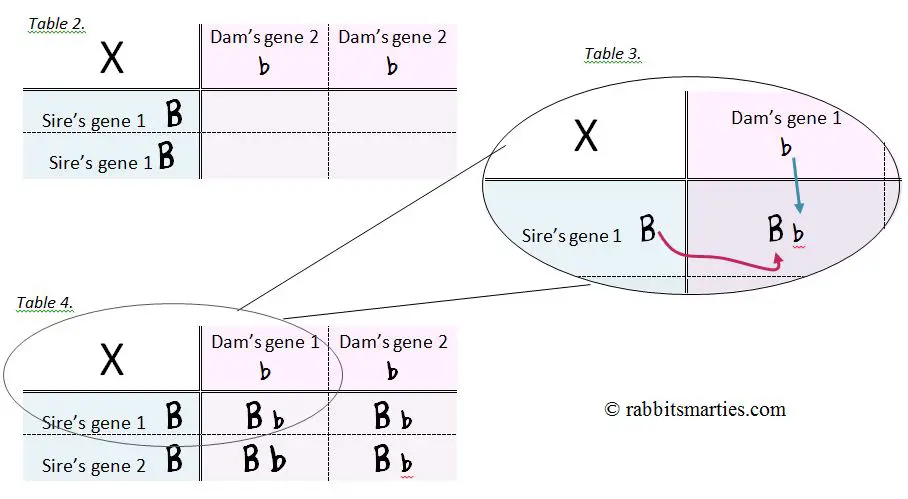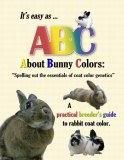<<Back to the Easy Rabbit Genetics Tutorial
When we want to know what colors two rabbits can produce, we use a graph called a Punnett Square, or as we will call them, a breeding square, to find the answer. Let’s hypothetically breed two rabbits, a black and a chocolate. We will use the letter B to indicate the black gene, and the letter b to indicate the recessive chocolate gene.

Table 1 is a Punnett Square frame that we need to fill in with our parent rabbits’ information.
The blue squares are the sire’s genes.
The pink squares are the dam’s genes.
The purple squares are the offspring.
Filling in the square: Let’s take the sire first. His genotype is B B. Remember that he can give either of his two genes to his offspring, sometimes the first one in the pair, sometimes the second. Write the first possibility in his first square, and the second possibility in his second square. (Because both his genes are the same, both his squares read b)
Do the same for the dam. She is b b and can only throw b. Now we have the Punnett Square, table 2, below. Now solve.

As we see in the completed square (table 4), all offspring are B b: blacks that carry chocolate. Remember that the dominant symbol is always written first, no matter which parent it came from.
 The square that we just did is rather more complicated than it had to be. Each blue or pink square represents a possible gene that the sire or dam can throw. When the parent has the same two symbols in a pair, it’s redundant to write it twice. We could have left the whole thing at table 3 and been just as correct.
The square that we just did is rather more complicated than it had to be. Each blue or pink square represents a possible gene that the sire or dam can throw. When the parent has the same two symbols in a pair, it’s redundant to write it twice. We could have left the whole thing at table 3 and been just as correct.
When both symbols in a pair are the same, we call this homozygous. Homozygous animals are sometimes called “true breeding”, because they will only throw the genes that they show in their coloration. They aren’t hiding any recessive genes. When the two symbols are different, we call this heterozygous.
This tutorial is an excerpt from “A Book About Bunny Colors: The Practical Breeder’s Guide to Rabbit Coat Color.”

Next Article: The Agouti Patterned Genes
